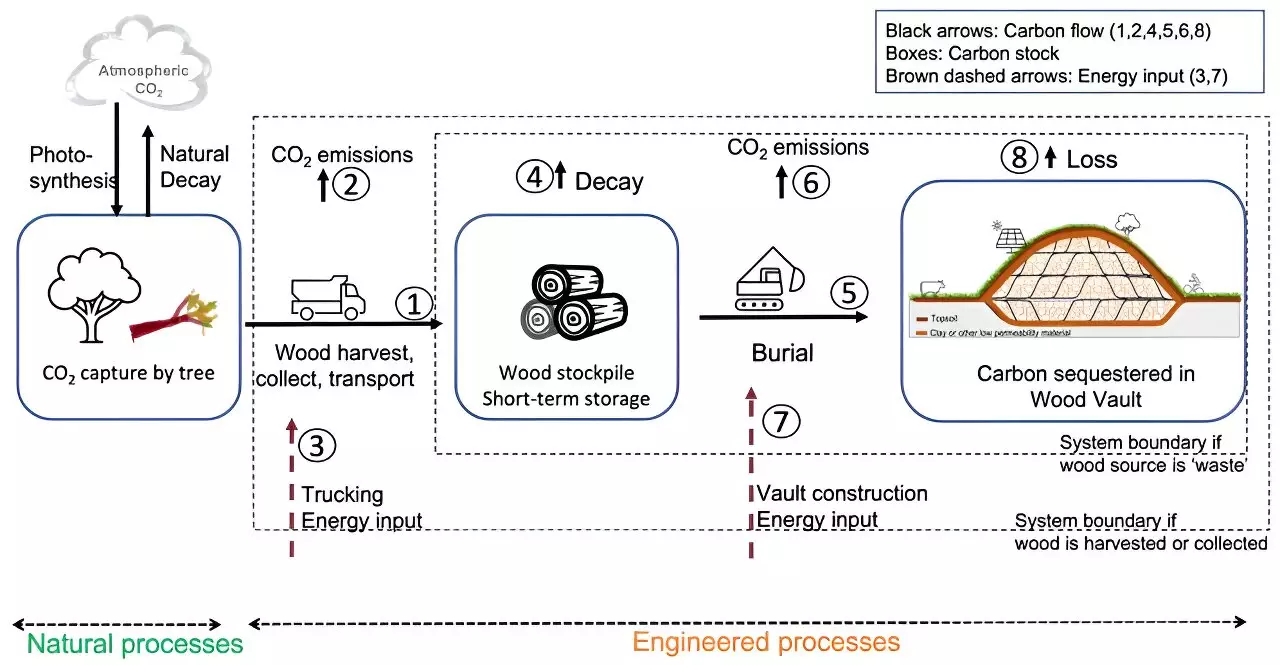The persistent rise in global temperatures, largely attributed to human-induced greenhouse gas emissions, has sparked an urgent discourse on effective climate solutions. Carbon dioxide (CO2), a significant contributor to this dilemma, necessitates immediate attention not only for preventing further emissions but also for the removal of the substantial amounts already present in the atmosphere. Traditional methods of carbon sequestration, while effective, often involve prohibitive costs and complex technologies. Thus, the search for pragmatic and economically viable alternatives is critical.
The Research Breakthrough at the University of Maryland
Recent findings from a collaborative study led by a team at the University of Maryland, in partnership with the Canadian Ministry of Agriculture, offer a fresh perspective on carbon storage strategies. Published in the prestigious journal Science, the research presents a novel approach: the burial of biomass as an inexpensive and practical means of capturing and storing carbon. The team’s investigation provided compelling evidence through the examination of a well-preserved log, dated to approximately 3,775 years ago, uncovered in clay-rich soil.
The integrity of the carbon stored in this log, which retained 95% of the carbon it absorbed during its lifetime, underlines the potential effectiveness of biomass burial in combating climate change. This natural example powerfully supports the hypothesis that carbon can be effectively sequestered when organic material is buried, thus preventing its release back into the atmosphere.
One of the most remarkable aspects of this research is its cost-efficiency compared to traditional carbon management strategies. The study indicates that the expense of burying logs and other forms of biomass ranges from $30 to $100 per ton—significantly lower than conventional methods, which can reach up to $300 per ton. This affordability makes biomass burial an appealing option for large-scale implementation and positions it as a key player in the fight against climate change.
In addition to economic benefits, the study suggests that global implementation of this method could allow for the sequestration of up to 10 gigatons of carbon annually. Such a scale of carbon capture represents a formidable contribution towards mitigating the effects of climate change, especially in a world where aggressive action is crucial.
The implications of this research extend beyond mere carbon storage; they invite a paradigm shift in how we perceive and handle biomass resources. By recognizing buried biomass as a viable carbon reservoir, policymakers and environmental managers may find new avenues for sustainable agriculture and forestry practices. This approach fosters a circular economy where carbon is captured and stored, contributing not only to climate mitigation efforts but also to the creation of healthier, more resilient ecosystems.
Moreover, the presence of clay within various soil types globally enhances the feasibility of biomass burial, suggesting that this method could be adopted broadly, regardless of geographic constraints.
The innovative research from the University of Maryland reveals promising potential for biomass burial as a cost-effective, efficient means of carbon sequestration. As the world grapples with the consequences of climate change, embracing such pragmatic solutions could pave the way for a more sustainable future. The intersection of affordability, practicality, and environmental responsibility positions this method as an essential tool in the global climate response arsenal.


Leave a Reply